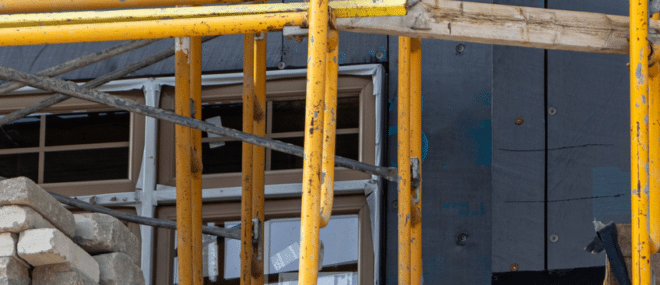Water damage is the last thing any business owner wants to experience. But checking your business property (which may also be your home) for water damage can be tricky, especially if you don’t know what to look for. That’s why knowing a few basics can be extremely useful. Below, we outline what can cause water damage, how inspectors check for water damage, how you can investigate for it, and ways you can go about preventing it.
What causes water damage?
A variety of things can cause water damage, such as:
- Site and subsurface drainage problems
- Foundation and structural element problems
- Building envelope deficiencies
- Unsecured door, window, and roof openings
- Improper door, window, and roof openings
- Improper materials
- Internal plumbing deficiencies
- Carelessness (leaving taps open, knocking off a sprinkler head, etc.)
- Improper connections or hook-ups of water using devices or appliances
- Freezing of pipes
- Catastrophic weather events
Where do inspectors check for water damage?
Inspectors typically start from the top and work their way down a home/building structure. Here’s where they’ll look:
- Attic
- Basement
- Kitchen
- Bathrooms
- Laundry room and washing machine
- Under sinks and plumbing
- Furnace and duct work
- Crawlspaces
- Ceiling
- Water heater or boiler
- Furniture
- Doors
The outside of a home/building structure is also important, so inspectors look at the following:
- Roof
- Gutters/Eavestrough
- Shed/storage
- Garage
- Water sources
How do inspectors check for water damage?
- Water marks or wet spots on the ceiling: Water marks left on the ceiling can indicate a leak coming from pipes, the roof, or the attic/an upstairs neighbour.
- Discoloured walls and cracking/flaking drywall: Drywall is meant to stay dry. When it is exposed to moisture, it can warp and rot over time. Keep an eye out for yellow-brown stains and discoloration, as well as peeling paint or wallpaper.
- Mold: Mold on walls may mean more than surface level issues. It could mean you have a leaky pipe that is affecting your insulation and drywall.
- Warping: Warped floors could indicate a high level of moisture underneath your floor boards or an issue with your foundation.
- Rust: Rust can indicate exposure to moisture/water over an extended period of time.
- Strange odors: A musty odor may indicate poor ventilation and more. Here’s how you can improve indoor air quality.
It’s easy to overlook obvious and visible signs of water damage because it occurs slowly over time, or you may just be used to how something looks, thinking it doesn’t look “that bad.” Before you shrug off another day of water damage, take a good hard look and see if it’s something you should have checked out or replaced.
Additional ways to investigate water damage:
- Renovation history: Was a renovation previously done to repair/cover up any issues? It’s important that the work was done well, as most water damage losses occur because of faulty workmanship. Check that a certified subcontractor was used for the repairs/renovations and, if possible, make sure they are a member of their applicable professional association.
- Claims history: Find out if there have ever been any claims made against the property for water or sewage backups.
- Ask the neighbours: You may end up meeting your prospective neighbours, so why not take the opportunity to ask them about their experiences with their properties? Be sure to ask about any issues they’ve had – like water damage.
- Look at utility bills: It’s not an obvious place to look, but if you notice utility bills seem higher than average for the area, there may be an underlying issue.
- Ask an expert: It’s a good idea to bring an inspector in to do their own evaluation before you buy. If you spot anything that concerns you, they may see the same things as well. Buying a property is expensive, so it’s a small investment to make for peace of mind.
Preventing water damage to your property
You can’t stop natural disasters or remind a neighbor to turn off a tap, but you can make sure you’re protected against water damage by trying out some of these tips:
- Check inside and outside waterproofing to see if it’s time to refresh any sealants.
- Check your roof and ensure you get an under the roof water shield membrane the next time the roof is done.
- Landscape with drainage in mind. If there are particular spots near your property’s foundation that get especially wet, consider ways to keep water from pooling.
- Check your basement for moist or musty odours, as that could be a sign of hidden water, which can cause mold. Learn what can cause basement flooding.
- Cracks, both inside and outside, should be taken care of.
Protect your property from more than water damage
“Water” and “damage” are two of the most dreaded words home and business owners hear. Water damage can be expensive to fix, inside and outside of a property. But there is protection available to help you recover from any financial losses you may suffer as a result. Make sure you have the insurance coverage you need so that you’re adequately covered in case you suffer water damage to your property.




